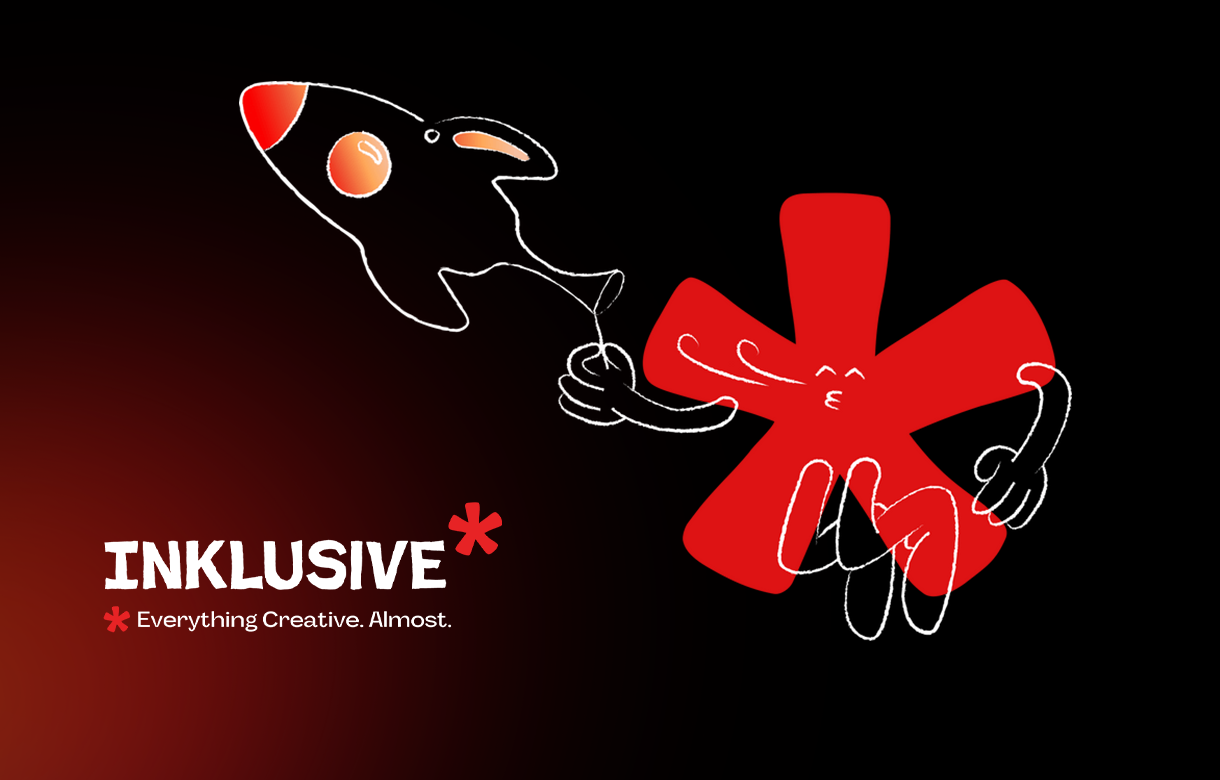Introduction
In today’s multi-channel marketing landscape, physical media like brochures and catalogues still hold a pivotal role. They bridge the tactile world with digital innovation, offering a sensory experience that digital platforms struggle to match. To grab the interest of possible clients, visual attractiveness is crucial. It helps to produce an outstanding advertisement for your business, a brochure design company needs to concentrate on this first and most crucial element. This article explores how integrating these traditional tools with modern design strategies can significantly enhance your brand visibility and engagement.
And then you may ask yourself these many questions:
- Why should you look for Pro Logo Design?
- Have you considered how a well-designed brochure can set your business apart in the digital age ?
- How does digital media impact both brochure and catalogue design?
Understanding Brochures and Catalogues

Brochures and catalogues are more than just paper; they are brand ambassadors. Brochures tend to be more concise, often aimed at highlighting a specific product or service, while catalogues provide a comprehensive look at a range of offerings. When collaborating with the best catalogue brochure design Service then you can witness the changes in the best ways possible.
Understand that creating a brochure is more challenging compared to billboards or hoardings due to its descriptive nature. An optimal brochure design aims to meet three criteria: immediate visual appeal, effortless readability, and engagement. Before crafting a brochure, a skilled designer strives to fulfil these requirements. It's crucial to recognize that brochures serve as promotional tools with the dual goals of enhancing brand presence and driving sales.

The Key Differences and Strengths
While both tools aim to inform and persuade, their strategies differ significantly. Brochures are direct and to the point, perfect for trade shows and first-time interactions. Catalogues, on the other hand, are detailed compendiums, ideal for browsing and deeper engagement.
The brochure catalogue difference is important to know. And creating a brochure is more challenging compared to billboards or hoardings due to its descriptive nature. An optimal brochure design aims to meet three criteria: immediate visual appeal, effortless readability, and engagement. Before crafting a brochure, a skilled designer strives to fulfil these requirements. It's crucial to recognize that brochures serve as promotional tools with the dual goals of enhancing brand presence and driving sales.
Catalogues and brochures serve distinct functions within the realm of marketing materials. Catalogues are comprehensive compilations of products, featuring detailed descriptions, specifications, and pricing for a wide range of items. They serve as extensive product listings, organized categorically or thematically, and are aimed at customers actively seeking specific product information to aid in purchasing decisions. Typically, larger in size and more extensive, catalogues prioritize clear product categorization and often include vivid images for each item. They are commonly distributed through mail, in-store displays, or as part of promotional campaigns targeting potential buyers.
On the other hand, brochures are concise promotional materials that focus on conveying information about a company, its products or services, and its overall brand identity. Unlike catalogues, brochures aim to engage both potential customers and stakeholders interested in learning more about the company. They are smaller and more compact, often folded into a tri-fold or bi-fold format for easy distribution at events, trade shows, meetings, or through direct mail campaigns. Brochures highlight key features, benefits, and highlights of the company's offerings, along with additional content such as company background, mission statements, or customer testimonials. They prioritize eye-catching design and concise messaging to capture attention quickly and effectively communicate the company's value proposition.
Brochures are effective at capturing initial interest and conveying key messaging about the company and its offerings. While their engagement metrics may not be as high as catalogs, well-designed brochures can still result in meaningful interactions with potential customers, driving brand recognition and influencing purchasing decisions. By collaborating with a product brochure Design Company -one can stand out from the masses.
Integrating with Digital Platforms
Leveraging QR codes, augmented reality, and hyperlinks in your printed materials can bridge the gap to digital content, creating a seamless user experience with Social Media Design that boosts engagement and measurability.
Know in detail about the digital integration techniques. Click on the link below
Pro Tip: Always ensure your digital elements complement the physical design, maintaining brand consistency across all platforms.
Designing for Impact: Best Practices

- Consistency is Key: Your brand’s visual identity should be consistent across all media.
- High-Quality Images: Use striking, high-quality images to grab attention and convey quality.
- Clear Call-to-Actions: Direct readers to your desired next step, be it a web visit, a social media follow, or a store visit.
- Clear Branding: Ensure that the branding elements such as logo, colors, and fonts are consistent with the company's brand identity to maintain coherence and reinforce brand recognition.
- Compelling Cover: Create visually appealing covers that instantly grab attention and entice recipients to pick up the brochure or catalogue. Incorporate striking imagery, bold headlines, and intriguing taglines to spark curiosity.
- Organized Layout: Arrange content logically and intuitively to guide the reader's eye smoothly through the material. Use clear headings, subheadings, and bullet points to facilitate easy navigation and comprehension.
- High-Quality Imagery: Use high-resolution images that effectively showcase products or services. Images should be visually appealing, relevant, and accurately represent the brand's offerings to capture the audience's interest.
- Concise Copywriting: Keep the text concise, yet informative, to maintain the reader's attention. Use persuasive language to highlight key benefits and features, focusing on what sets the products or services apart from competitors.
- Whitespace: Incorporate ample whitespace to avoid clutter and allow the content to breathe. Strategic use of whitespace enhances readability and visual appeal, making the material more inviting and easier to digest.
- Consistent Brand Voice: Maintain a consistent tone and voice throughout the brochure or catalogue to reinforce brand personality and messaging. Whether formal, friendly, or professional, the language should resonate with the target audience.
- Call to Action (CTA): Include clear and compelling calls to action to prompt readers to take the desired next step, whether it's making a purchase, visiting a website, or contacting the company for more information. Place CTAs strategically throughout the material for maximum impact.
- Interactive Elements (if applicable): Incorporate interactive elements such as QR codes, augmented reality features, or clickable links (for digital versions) to enhance engagement and provide additional value to the audience.
- Quality Printing and Finishing: Invest in high-quality printing and finishing techniques to elevate the overall look and feel of the brochure or catalogue. Choose premium paper stock, finishes (e.g., matte, gloss), and printing methods (e.g., offset, digital) that complement the design and enhance the tactile appeal.
By adhering to these best practices and customizing the design approach to suit the specific goals and target audience one can drive desired actions. It has been proven that elements adds to your glory.
[Link to top catalogue design agency services]
Famous Design Insights
Several famous design insights can provide valuable guidance for creating impactful brochures and catalogues. Here are a few notable ones:
- Less is More (Mies van der Rohe): This principle emphasizes the importance of simplicity and minimalism in design. When applied to brochure and catalogue design, it suggests that removing unnecessary clutter and focusing on essential elements can lead to more effective communication and visual appeal.
- Form Follows Function (Louis Sullivan): This design principle underscores the idea that the form of a design should be determined by its intended function or purpose. For brochures and catalogues, it suggests prioritizing usability and clarity of information, ensuring that the design serves the practical needs of the audience.
- Grid Systems (Swiss Design): The Swiss Design movement popularized the use of grid systems for organizing content in a structured and harmonious manner. Applying grid-based layouts to brochure and catalogue design can help maintain visual consistency, improve readability, and create a sense of orderliness.
- Typography Matters (Jan Tschichold): Typography plays a crucial role in design, influencing readability, mood, and overall aesthetic appeal. Following Tschichold's insights, carefully selecting appropriate fonts, sizes, and spacing can enhance the readability and visual impact of text in brochures and catalogues.
- Hierarchy of Information (Gestalt Principles): Gestalt principles, such as proximity, similarity, and hierarchy, help designers organize information in a way that guides the viewer's attention and understanding. Applying these principles to brochure and catalogue design can help prioritize key messages, establish visual flow, and improve overall comprehension.
- Emotional Design (Don Norman): Don Norman's concept of emotional design highlights the importance of designing products and experiences that evoke positive emotions and resonate with users on a deeper level. In brochure and catalogue design, incorporating emotive imagery, compelling storytelling, and sensory elements can create memorable experiences that resonate with the audience.
- User-Cantered Design (Dieter Rams): Dieter Rams' principles of good design emphasize the importance of considering the user's needs and preferences throughout the design process. Applying user-centre design principles to brochure and catalogue design involves understanding the audience's motivations, preferences, and behaviours to create engaging and user-friendly experiences.
"Design is not just what it looks like and feels like. Design is how it works." - Steve Jobs
“The details are not the details. They make the design.” - Charles Eames
Leveraging Multimedia
Embedding YouTube tutorials on the brochure and catalogue design and integrating podcasts from design leaders can provide valuable insights and draw in a more engaged audience.
Leveraging multimedia elements in brochure and catalogue design can significantly enhance engagement and interactivity, providing a dynamic and immersive experience for the audience. Incorporating multimedia such as videos, animations, interactive graphics, and audio clips allows brands to showcase products or services in a more compelling and memorable way.
For example, a video demonstration can bring products to life, allowing customers to see them in action and gain a better understanding of their features and benefits. Interactive graphics, Web & Mobile UI/UX can enable users to explore product details or customization options, increasing involvement and personalization. By integrating multimedia seamlessly into brochures and catalogues, brands can captivate their audience, differentiate themselves from competitors, and leave a lasting impression that drives interest and conversions.
Watch the tutorial on effective catalogue design
Listen to the podcast on the impact of physical marketing materials-
Showcasing Success: Case Studies
Illustrate successful cases where innovative brochure and catalogue designs have driven sales and improved customer engagement.
- IKEA Catalogue: IKEA's annual catalogue is widely regarded as one of the most effective marketing tools in the retail industry. Each year, millions of copies are distributed worldwide, showcasing the company's extensive range of furniture and home accessories. The catalogue not only serves as a comprehensive product listing but also inspires customers with room setups, design ideas, and lifestyle imagery. According to IKEA, the catalogue significantly contributes to sales growth, with many customers making purchases directly inspired by items featured in the catalogue.
- BMW Brochure Campaign: BMW launched a targeted brochure campaign to promote its new luxury sedan model. The brochure was meticulously designed to highlight the car's innovative features, advanced technology, and superior craftsmanship. Through a combination of stunning visuals, detailed specifications, and compelling storytelling, the brochure effectively communicated the value proposition of the new model to potential buyers. The campaign resulted in a significant increase in test drives and inquiries at BMW dealerships, ultimately leading to a boost in sales of the new sedan.
Know more about successful designs click on the link :
Conclusion
Brochures and catalogues remain essential tools in the marketer’s kit, offering a unique blend of creativity and information that can captivate and convert. As digital and physical realms continue to converge, the potential for innovative design in traditional formats is limitless.
An effective brochure and catalogue design services play a pivotal role in capturing audience attention, communicating brand messages, and driving sales. By adhering to principles of clarity, creativity, and user-centricity, designers can create impactful marketing materials that resonate with customers and inspire action. Whether through captivating visuals, compelling storytelling, or interactive multimedia elements, well-designed brochures and catalogues have the power to leave a lasting impression, differentiate brands from competitors, and ultimately contribute to business success. As businesses continue to embrace the potential of print and digital marketing channels, investing in professional design services for brochures and catalogues remains a strategic imperative for achieving marketing objectives and fostering long-term customer relationships.
"Design is the silent ambassador of your brand." - Paul Rand
Ready to elevate your marketing with stunning brochure and catalogue designs? Discover how our bespoke design services can transform your brand's presence. A Top catalogue design Agency is all that you need to get the most compelling results from your branding.
Transform your vision into reality with our expert brochure and catalogue design services. Let us craft captivating marketing materials that resonate with your audience, drive engagement, and boost sales.
Boost your brand's visibility and make a lasting impact. Get in touch with us right now to launch your brand! To learn more about our services in detail, click the link.-












.jpg)
.jpg)
.png)

.png)


.jpg)







%20(1).jpg)






%20(1).png)